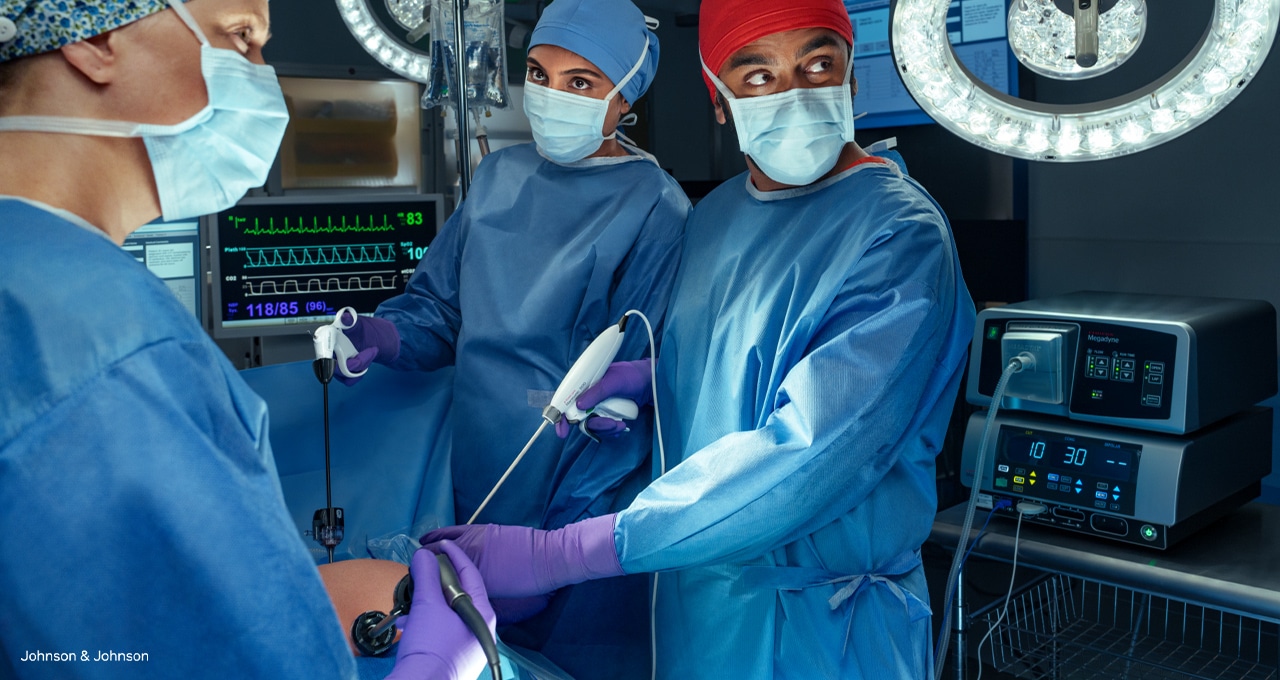AI — already used to connect, analyze and offer predictions based on operating room data — will be critical to the future of surgery, boosting operating room efficiency and clinical decision-making.
That’s why NVIDIA is working with Johnson & Johnson MedTech to test new AI capabilities for the company’s connected digital ecosystem for surgery. It aims to enable open innovation and accelerate the delivery of real-time insights at scale to support medical professionals before, during and after procedures.
J&J MedTech is in 80% of the world’s operating rooms and trains more than 140,000 healthcare professionals each year through its education programs.
Seeking to bring together its legacy and digital ecosystem in surgery with NVIDIA’s leading AI solutions — including the NVIDIA IGX edge computing platform and NVIDIA Holoscan edge AI platform for building medical devices — J&J MedTech can accelerate the infrastructure needed to deploy AI-powered software applications for surgery. IGX and Holoscan can support secure, real-time processing from devices across the operating room to provide clinical insights and improve surgical outcomes.
Unveiled at NVIDIA GTC, the global AI conference taking place March 18-21 in San Jose, Calif., and online, this work could also facilitate the deployment of third-party models and applications developed across the digital surgery ecosystem by providing a common AI compute platform.
“AI models are currently being created by experts in surgery in various parts of the world,” said Shan Jegatheeswaran, vice president and global head of digital at J&J MedTech. “If we can create a trusted, open ecosystem that enables and accelerates coordination, it would create a flywheel of innovation where different groups can collaborate and connect at scale, improving access to advanced analytics across the surgical experience.”
An Open Ecosystem for AI Innovation: Building on NVIDIA Holoscan and IGX
J&J MedTech is working with NVIDIA to test how industrial-grade edge AI capabilities purpose-built for medical environments could benefit surgery.
“Our connected digital ecosystem will help break down the traditional barriers to entry for developers seeking to build applications and deploy analytics in the operating room,” Jegatheeswaran said. “We’re making it simpler for those who want to participate in the surgical workflow by eliminating the heavy lifting of building a secure, enterprise-grade platform.”
NVIDIA Holoscan accelerates the development and deployment of real-time AI applications to process data streams.
Holoscan includes reference pipelines to build AI applications for a variety of medical use cases, including endoscopy, ultrasound and other sensors. It runs on NVIDIA IGX, which includes NVIDIA Jetson Orin modules, NVIDIA RTX A6000 GPUs and NVIDIA ConnectX networking technology to enable high-speed data streaming from medical devices or operating room video feeds.
NVIDIA supports the IGX software stack with NVIDIA AI Enterprise, the enterprise operating system for production-grade AI.
Fueling Surgical AI With Device Data
The J&J MedTech team envisions the potential of NVIDIA-accelerated edge analytics behind its connected digital ecosystem as an enabler of AI-powered applications fueled by device, patient and other surgical data.
Developers could leverage continuous learning, where an algorithm improves based on data collected by the deployed device. Real-world footage collected by an endoscope, for example, could be used to refine an AI model that identifies organs, tissue and potential tumors in real time on an operating room display to support clinical decision-making.
“Surgical technologies will get more intelligent over time, bringing the power of advanced analytics to surgeons and hospitals,” said Jegatheeswaran. “A collection of AI models could act like driver-assistance technology for surgeons, amplifying their ability to deliver care while reducing cognitive load.”
One example is AI that removes personally identifiable information from surgical videos so they can be used downstream for research purposes — or, when processed in real time, enable hospitals to bring in external experts through telepresence to consult during a surgery while maintaining patient privacy.
Future applications could enable surgeons to interact with chatbots to gain insights about a patient’s medical history or best practices for handling certain complications. Other models could improve operating room efficiency by using video feeds to understand when a procedure is almost complete, alerting the next surgical team that a room will soon be available.
Discover the latest in AI and healthcare at GTC, running in San Jose, Calif., and online through Thursday, March 21. Tune in to a special address on generative AI in healthcare delivered by Kimberly Powell, vice president of healthcare at NVIDIA, on Tuesday at 8 a.m. PT.
Watch the GTC keynote address by NVIDIA founder and CEO Jensen Huang below:
